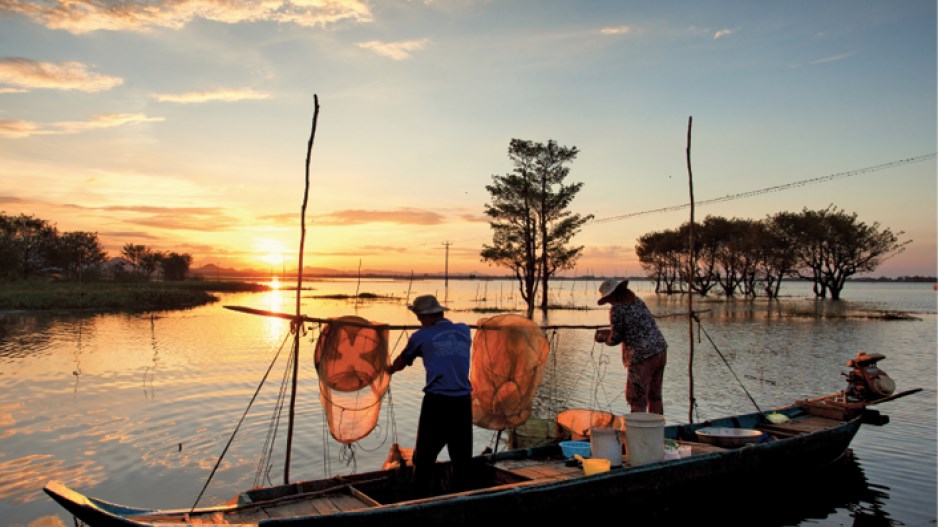The determination of the government of Laos to lift its people out of poverty by becoming “the battery of Southeast Asia” is causing alarm among the country's neighbours.
The Vientiane government sees its stretches of the mighty Mekong River and its tributaries as a priceless resource that, when harnessed for hydro power, will make Laos rich from the export of electricity to its southeast Asian neighbours and China to the north.
Laos already has 17 hydropower dams in operation, supplying electricity for the domestic market and for export to Vietnam and Thailand.
But what causes concern among neighbours, especially Cambodia, Vietnam and Thailand, is that Vientiane has another 78 dams either under construction or in the planning stages, or that are the subject of feasibility studies.
There are fears that even if the Laotian government's reach falls well short of its ambitions, the disruption to the flow of the 4,350-kilometre-long river will have catastrophic impacts.
Most critical is the blocking by the dams of fish migration routes. The Mekong basin is the world's largest freshwater fishery. About 50 million people living around the Mekong depend on fish from the river for 80% of their protein.
And the nutrient-laden silt in the river's waters, which it gathers all along its passage from the Himalayas to the South China Sea, is essential to the rice-growing industry in the Mekong Delta region of southern Vietnam. Too many dams will stop this flow.
These and other unwelcome consequences from dam construction are not mere speculation.
Cambodia and Vietnam in particular have already seen the finely tuned workings of the Mekong affected by the six hydroelectric dams built by China without any consultation with its southern neighbours.
To try to minimize the adverse affects of ill-considered development, the Mekong River Commission (MRC) was formed in 1995 with Laos, Cambodia, Vietnam and Thailand as members. By and large, the commission has been an effective forum to resolve conflicting interests.
But the commission is only a consultative body without teeth. All recent evidence is that Laos is being purposefully duplicitous – pretending to consult while in reality disregarding all criticism of its projects.
At the end of last month, members of the MRC council got their latest example of how Vientiane manipulates the agreements to its own advantage.
The Laotian government's plans to build a hydro dam at Don Sahong, two kilometres upstream from the border with Cambodia, where the Mekong splits to surge through the Khone Falls, have raised many red flags over probable effects on fish migration.
Vientiane first argued that Don Sahong is a tributary of the Mekong, not the main stream. Therefore, Vientiane said, it was obliged under the MRC agreements only to “notify” neighbours of the project, not to “consult” with them.
In fact, while the Mekong does split into several channels as it negotiates the Khone Falls, it has never been previously suggested that the Sahong stretch is anything other than part of the main stream.
Seeing the rising tide of opposition, Vientiane said it would engage in six months of “consultation” with its neighbours about the project. That may sound like a climbdown, but it's not.
The MRC agreements don't require countries to stop work during “consultation,” and Vientiane had not planned to start work on the Don Sahong dam until December anyway.
The best that can be said is that Vientiane is being a tad more courteous than it was in its recent confrontation with the MRC over construction of the Xayaburi Dam in northern Laos.
There the Vientiane government avoided any serious consultation on construction of what many assessments say is a dangerously flawed project.
It ignored its obligation to consult until construction had started and then entered into a worthless consultation process because construction had started and continued during the talks.
In its quest for economic development, the communist government of Laos has been frequently accused of passively allowing itself to become a colony of China.
However, there does not appear to be anything passive about it. Vientiane calculates that exploitation of its land and natural resources is the quickest route to improving the livelihood of its nearly seven million people, who are among the poorest on earth.
Unlike other southeast Asian countries, Laos does not see China's Communist Party government as an ideological threat. So in recent years it has welcomed Chinese businesses and investment with open arms. That embrace has been facilitated by the completion last year of the North-South Economic Corridor and its 1,800-kilometre highway linking China's western hub Kunming with Thailand's capital Bangkok, via Laos.
Chinese entrepreneur migrants have flooded into northern Laos, setting up retail businesses selling imported Chinese manufactured goods and constructing a tourist industry, some of it based around massive casino projects.
Until the mid-2000s, Chinese investment in Laos was minuscule compared with that from other countries such as Thailand and Vietnam. But in recent years investment by Chinese companies, most of them state-owned industries, has rocketed to over $4 billion.
Their targets are mining opportunities, commercial agriculture and Laos' potential for hydro power generation. But the revenues from these projects usually flow straight to the Vientiane government and benefits for local people are not readily apparent.
Indeed, a massive bauxite mine development on the Bolaven Plateau by China Minmetals threatens 99% of Laos' coffee production. The encouragement of commercial agriculture has forced many Laotian subsistence farmers to give up their land and become day labourers for Chinese agribusinesses. And Chinese companies are the lead players in about 30% of the 78 hyrdoelectric dams Laos has under construction or on the drawing board.




